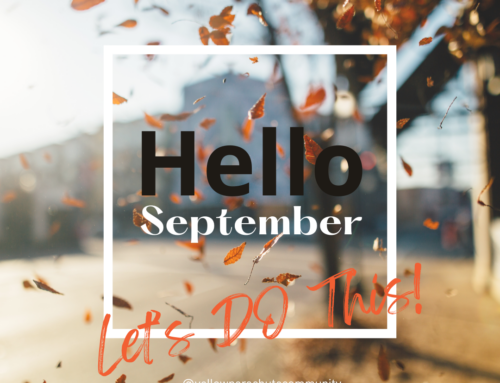Click.
How many times a day do you feel the lenses of other people trained on you? Do you imagine what they notice—the coffee stain, the rogue zit, the quaver in your voice? Our (often misguided) ideas of how others see us can warp our self-perception. We begin to think we can read other peoples’ minds and we invent stories to explain why they react to us the way they do. We have theories about why someone brushed us off when we asked how they’re doing, invited us over for lunch for the first time in years, called us, didn’t call us, treated us kindly, poorly or indifferently. You know the time when your best friend didn’t call you back right away and you just knew she must be mad at you? Click. Because our brains crave connections the way our bodies crave sugar, we constantly invent these stories to explain our social world.
These stories accumulate into our personal narrative, and we consult this narrative to dictate who we are and what choices we make. We become the stories we tell ourselves.
So what if our stories are false, our personal narrative the product of thousands of incorrect conclusions? What if our self-image is distorted? Maybe your best friend’s cell phone ran out of batteries in the hands of her curious toddler. Maybe your brother had a tough day at work and doesn’t want to share how he’s doing. When we don’t have all the information—and we almost never do—we find ways to blame ourselves and put our energy into “correcting” our imperfect selves. And you miss the chance to put that energy towards becoming the you that you want to be. Remember the false mindset of “the natural?” Well, “the unworthy” is another false mindset—that undermines our true selves.
To make matters murkier, our body adds its own distortion to our stories. Hungry, Angry, Lonely, Tired all provide false evidence to our meaning-hungry brains. Instead of realizing, “Oh, my body is still waking up because I didn’t sleep well last night; that’s why everything looks grey,” our brain says, “Everything is horrible, terrible, no good, and very, very bad.” And we lose yet another layer of truth on our storyboard.
The picture’s looking kind of bleak about now, isn’t it? No wonder our bodies are weary and our minds are anxious and worn. We spend our dark days running from lions and tigers that aren’t really there. Your friend calls you back and explains; immediately the cloud is lifted and you breathe a sigh of relief, wondering how you got the story so wrong. But between our hard-working minds and our tricky bodies, it’s hard to stay in touch with reality.
But it’s possible! Cue music and the rays of sun shining down to illuminate the holes in our perspective. Mindfulness, curiosity, belief, growth mindset, and practice create the connection between reality and our beliefs about ourselves. Knowledge is power: let there be light!
Take a disenfranchised student—the student who thinks she isn’t worthy of her teachers’ time and attention, so she decides they aren’t worthy of hers either. Maybe she gets C’s and D’s and says she doesn’t care because school is boring and pointless, so why try? She’s adopted the identity of “the unworthy,” and she wears this identity like armor.
How did she arrive at this identity? It might have started with a teacher she didn’t click with or had a hard time reading, and she decided that teachers, in general, just don’t like her. Or it could have been a string of bad grades that made her doubt her abilities, so to protect herself she decided not to care. And once she formed this “I’m a bad student” story, she started to behave accordingly. Skipping homework, guessing randomly on tests, maybe even cutting class. Because that’s what bad students are supposed to do, right? Add in the layers of developing brains and peer and family pressures, and we’ve got quite a kaleidoscope of confusion.
How will these kids learn that failure doesn’t mean they aren’t smart, or that their teachers are the enemy? The solution to helping these kids take control of their narrative is building relationships. Research being conducted at Search Institute is demonstrating that when young people experience relationships with adults that express care and respect while challenging kids to grow, their outcomes improve in a wide range of areas – from mastering social and emotional skills to succeeding in school–and risk behaviors such as drinking, smoking, and fighting are significantly lower.
This is the Yellow Parachute Learning Coach’s core mission, to help young people drown out the noise of everyone else’s “shoulds” and heal the pain of their own mistaken self-image. A Learning Coach can redirect a kid’s energy towards their ideal self’s “want-to’s and need-to’s,” to become, to serve, to persist, to harness their power of voice and choice at school. We all have powerful voices and powerful truths; sometimes they’re obscured by years of jumping to harsh conclusions about ourselves.
Until students see themselves as learners—capable of growth from small, continuous changes—they make choices according to how they see themselves through their broken lenses. Remember my kids’ eating choices? Not so hot until they started thinking as athletes when fueling up.
Next week I want to give you an update on our checklist work over here in our household, how writing about voice and choice has inspired our family routines, and how I’m using it to guide my kids to see the value of hard work. I sure hope you’re finding these posts helpful in working change or growth into your own family’s lives. Please send comments about what you’d like to hear more about!
-Cara







